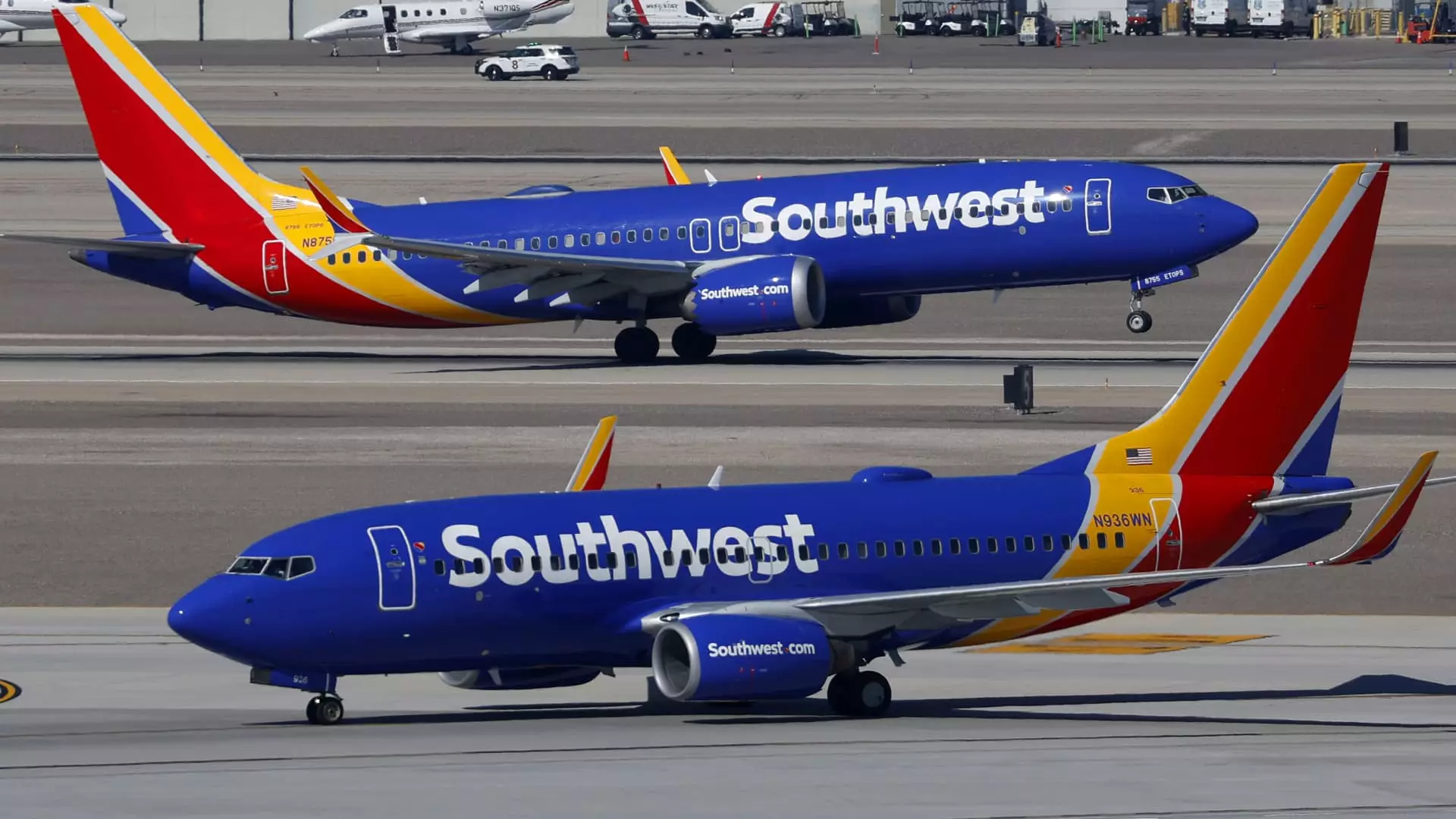For over half a century, Southwest Airlines has stood as a symbol of airline independence—a carrier that defied industry norms with its open seating policy. This approach not only set it apart from competitors but also fostered a unique customer experience rooted in spontaneity and democratic boarding. Now, in an audacious move driven by financial necessity, Southwest is dismantling this longstanding tradition. The question that looms large is whether this strategy will ultimately dilute the airline’s identity or fortify its future amid fierce market competition.
The decision to phase out open seating signifies more than a logistical tweak; it represents a fundamental transformation of Southwest’s brand ethos. The airline’s leadership claims this is a step towards boosting revenue streams and operational efficiency. But underneath these rationales lies a profound shift in how Southwest interprets its relationship with its loyal customer base—long accustomed to a free-for-all boarding process that fostered a sense of shared camaraderie and egalitarianism. Removing this element is akin to tearing out a core part of the airline’s identity, and fans of Southwest’s rebellious spirit are justifiably concerned about the implications.
Financial Incentives versus Customer Loyalty
Southwest’s push toward assigned seating is, at its core, a response to market pressures. The airline is under intensified scrutiny from more profitable competitors, many of whom have long embraced ancillary fees and dynamic pricing models. In an era where revenue diversification is paramount, Southwest’s move to introduce seat selection fees and tiered boarding groups is a calculated attempt to stay competitive financially.
However, this shift could jeopardize the very loyalty the airline has prided itself on. For years, Southwest’s open seating policy allowed passengers to choose their spots spontaneously—a process that, while chaotic, engendered a sense of participation and equity among travelers. Now, with boarding groups determined by frequent flyer status, fare type, and seat selection, some customers may feel alienated, perceiving the changes as a departure from the airline’s former customer-centric approach. It’s a gamble that the perceived loss of spontaneity will be offset by the potential for higher ancillary revenues and improved operational predictability.
The financial rationale is compelling, but it invites a broader question: Can an airline preserve its identity and customer goodwill when it shifts focus from egalitarian simplicity to a labyrinth of fees and tiered privileges? Southwest seems to believe so, banking on the idea that loyal customers—those who pay for preferred seating and early boarding—will accept the trade-off if it guarantees a smoother, faster boarding process and enhanced comfort.
Operational Overhaul and the Future of Boarding
The technical execution of this transformation is as intriguing as the strategy itself. Southwest’s meticulous planning to ensure efficiency underscores a vital aspect of modern airline management: balancing profit motives with operational excellence. The new boarding system, comprising eight groups ordered by loyalty status and fare type, aims to streamline what was once a chaotic scramble. The airline has invested in reconfiguring aircraft with extra-legroom seats and selling early boarding options, showing a desire to cater to both convenience and premium offerings.
But does this reinforce or undermine Southwest’s reputation for democratizing air travel? Critics could argue that by prioritizing elite tiers and introducing fees, the airline may alienate its core customers who valued the simplicity and fairness of open boarding. Meanwhile, families and those seeking spontaneity might be inconvenienced, losing the spontaneity that once characterized their experience. Although Southwest emphasizes that seat selection options still exist, the overall experience will inevitably evolve into a more segmented and commercially driven process.
Furthermore, the effectiveness of these changes hinges on customer acceptance. While some will appreciate the predictability and potential comfort upgrades, others—especially those who cherished the airline’s egalitarian ethos—may feel betrayed. As Southwest navigates this delicate transition, its ability to maintain customer satisfaction while maximizing revenues will be a testing ground of strategic balance.
Will Southwest Survive the Cultural Shift?
This move to assigned seating might be the most consequential chapter in Southwest’s history—an inflection point where entrepreneurial spirit meets corporate pragmatism. The airline’s leadership argues that modernization and revenue growth require these profound shifts. Yet, in doing so, they risk diluting a brand that was built on rebellion against industry conventions.
In the final analysis, Southwest’s future may depend less on the success of its new boarding process and more on how well it preserves the loyalty cultivated through decades of providing a distinctive flying experience. Whether this transition is a strategic necessity or a misguided capitulation to market forces remains to be seen. Regardless, one thing is clear: Southwest’s identity as an airline that dared to break the rules is at a crossroads, and the outcome will shape its legacy for years to come.

